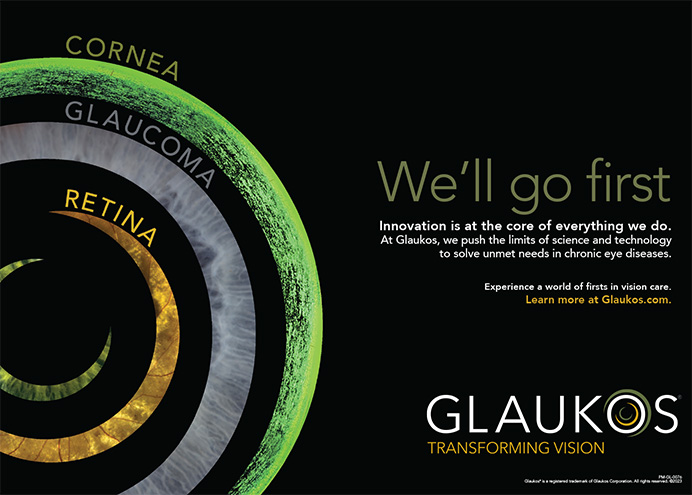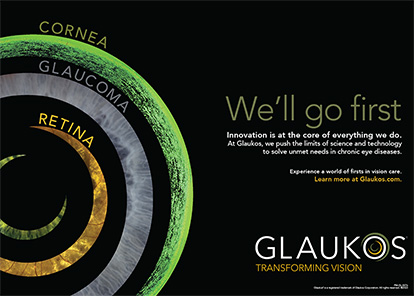
Social media has become an invaluable tool for patients and physicians alike, particularly millennial physicians who grew up and trained during the digital revolution.1 These doctors have embraced social media as both a personal and a professional networking tool. The COVID-19 pandemic accelerated this trend as traditional in-person interactions became less feasible. Ophthalmologists, like other physicians, are increasingly turning to social media to create online communities for discourse, mentorship, and education.2 Studies have demonstrated the benefits of social media for career development and education in other fields of medicine. Little is known, however, about how ophthalmologists use social media in these areas.3-7
To gain a deeper understanding of how social media is being used in this field, my colleagues and I sent a 40-item questionnaire to social media–using ophthalmologists during the height of COVID-19 physical distancing measures. This article explores the results of the survey.8
METHODOLOGY
The questionnaire was based on themes extracted from a literature review on social media, training, mentorship, and personal and professional challenges in ophthalmology and medicine. It was distributed online as a link to active social media users within ophthalmology, including trainees and practitioners, via major ophthalmology-related social media accounts on Instagram and Twitter as well as email listservs, such as Bryn Mawr Communications (publisher of CRST and MillennialEYE [now known as Bookmarked]), from November to December 2020. Participants who indicated that they did not use social media were excluded.
The study included a total of 149 participants, with a survey participation rate of 76%, based on the 196 surveys that were opened during the study period. Most participants were women (67.1%); 32.2% were men. Most of the participants were between the ages of 25 and 35 years (56.4%). Approximately one-third of respondents were still in training (35.5%), and one-quarter (25.5%) had been in practice for less than 5 years.
More than half of the respondents were White (52.4%), and 32.2% were Asian. Most respondents were married (69%), and almost half had children (49%). The most represented subspecialty was anterior segment, cornea, and refractive surgery (26%), and private group was the most common practice setting.
SOCIAL MEDIA USE AMONG OPHTHALMOLOGISTS
Ninety-four percent of respondents had a professional social media account, and the most popular platforms were Instagram (58%), LinkedIn (52%), and Facebook (45%). More than 60% of participants reported spending at least 1 hour per day on social media, and 19% spent more than 2 hours per day.
Respondents reported using social media for a variety of reasons, including staying in touch with family, promoting their practice and/or professional services, educating patients and/or the public about ophthalmology, sharing interesting clinical and/or surgical cases with colleagues, and finding mentorship and/or networking opportunities.
SOCIAL MEDIA USE IN OVERCOMING CHALLENGES
The study examined how social media can be used to overcome personal and professional challenges in ophthalmology.
Gender. Workplace discrimination was one of the lowest reported challenges overall. Women, however, were more likely than men to report experiencing workplace discrimination (P < .01), with gender bias cited as the most common reason for discrimination. Women were also more likely than men to report work-life disharmony (P < .05).
Women were more likely to describe social media as useful for overcoming challenges related to workplace discrimination (P < .01), work-life disharmony (P < .001), parenting (P < .0001), and mentorship (P < .05). Women were also more likely to use social media to discuss and seek support for gender issues (P < .05).
Age and career stage. Younger respondents (< 45 years) were more likely to report challenges with financial planning, practice management, and work-life harmony and to spend a greater amount of time on social media. More senior respondents (> 45 years) were more likely to use social media as a medium to provide mentorship to students, trainees, and/or colleagues in ophthalmology.
ADDITIONAL THOUGHTS
The researchers analyzed responses to the following open-ended question: Is there anything else you think we should know about how and why you integrate social media into your career and/or personal life? Five themes were positively oriented: career development, networking, education, mentorship, and lifestyle recommendations. Two themes were negatively oriented: the risk of misinformation and perceived bias toward a younger audience.
Participants highlighted the unique benefits of social media for career advancement and learning opportunities, particularly in networking, community building, education, and mentorship. Also noted was social media’s ability to connect geographically and socially distant individuals, which could transcend the professional domain and alleviate feelings of loneliness and burnout.
Several participants emphasized the less formal style of engagement fostered by social media platforms as well as the fun and creative elements. However, some participants acknowledged that social media participation favors a younger audience. Despite the advantages, many respondents recognized the limitations of social media, such as the risk of bias toward less-authentic, highly curated content and negativity. Some respondents recommended using social media in moderation to supplement other professional outlets.
CONCLUSION
The study found significant differences in the personal and professional challenges reported by different demographic groups. The results also indicate how social media was used to mitigate these challenges. Understanding how social media is used to overcome challenges can suggest ways to support and promote professional growth and development within the field of ophthalmology.
1. Rolls K, Hansen M, Jackson D, Elliott D. How health care professionals use social media to create virtual communities: an integrative review. J Med Internet Res. 2016;18(6):e166.
2. Topf JM, Williams PN. COVID-19, social media, and the role of the public physician. Blood Purif. 2021;1-7.
3. Luc JGY, Stamp NL, Antonoff MB. Social media as a means of networking and mentorship: role for women in cardiothoracic surgery. Semin Thorac Cardiovasc Surg. 2018;30(4):487-495.
4. Wagner JP, Cochran AL, Jones C, Gusani NJ, Varghese TK Jr, Attai DJ. Professional use of social media among surgeons: results of a multi-institutional study. J Surg Educ. 2018;75(3):804-810.
5. Luc JGY, Stamp NL, Antonoff MB. Social media in the mentorship and networking of physicians: important role for women in surgical specialties. Am J Surg. 2018;215(4):752-760.
6. El Alami F, Moursli Y, Chikhaoui S, et al. Social media and its impact on ophthalmology training. J Fr Ophtalmol. 2022;45(1):34-39.
7. Leitão Guerra RL. A perspective on retina education through social media. Int J Retin Vitr. 2020;6(1):44.
8. He B, Tanya SM, Costello F, Kherani F, Shamie N, Zhu D. Navigating personal and professional development through social media in ophthalmology. Clin Ophthalmol. 2022;16:2263-2274.




